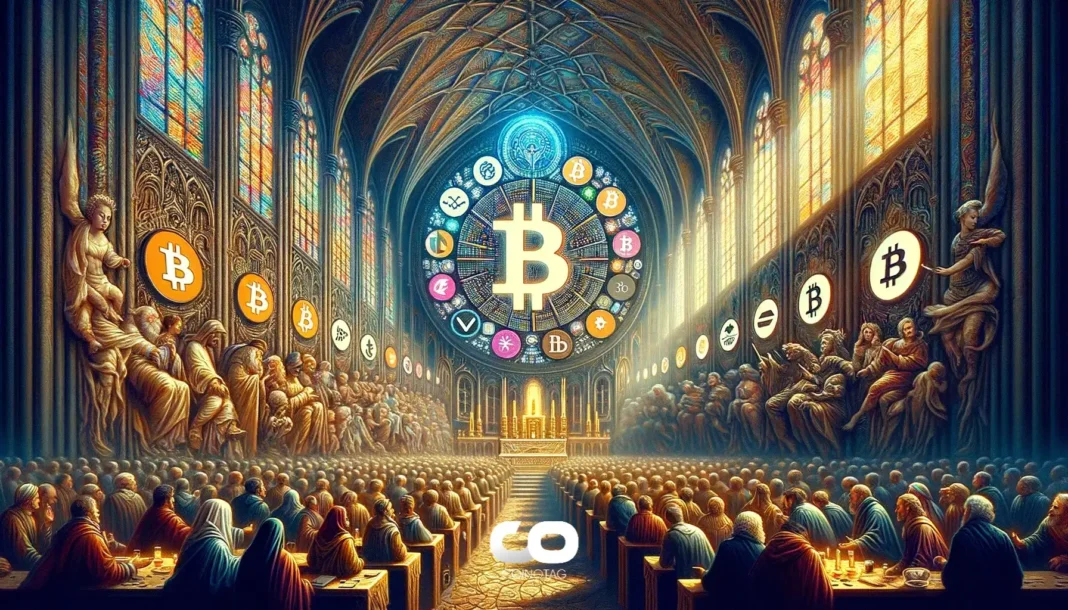-
Ethereum is facing significant challenges as its supply increases while investor sentiment shifts, leading to an intensifying rivalry with Solana.
-
Despite the anticipated benefits from its transition to proof-of-stake, ETH has seen a substantial decline in market dominance, rising concerns about its price trajectory.
-
“The Merge is the worst thing that happened to Ethereum,” states Alphractal’s CEO, reflecting the frustration among long-term holders as ETH struggles against BTC.
Ethereum’s supply is on the rise, ETH whales are offloading their holdings, and Solana takes the spotlight, challenging Ethereum’s market position.
Ethereum’s Supply Dynamics Post-Merge
As of early February 2024, Ethereum’s supply growth rate is nearing 0%, indicating that the disinflationary effects anticipated from the Merge have plateaued. According to UltraSound.Money, this stagnant supply growth contrasts sharply with earlier projections that suggested a sustained deflationary environment for ETH.
The peak supply reduction was recorded at -0.37% in April 2024. Ethereum’s deflationary mechanics, driven by EIP-1559, which burns a portion of transaction fees, rely on sufficient on-chain activity. However, as on-chain activity wanes, falling gas fees result in diminished ETH burns, which further exacerbates the supply issue.
Transaction Fees and Network Demand
Token Terminal’s data illustrates the alarming trend of declining transaction fees, which peaked at over $15 in March 2024 but plummeted to under $5 as activity slowed. This dip signifies reduced demand for Ethereum’s network and consequently contributes to a continuously rising Ether supply.
The decrease in transaction fees reflects a broader decline in the network’s activity levels, implying a shift in user engagement and interest in Ethereum compared to its competitors.
Investor Behavior and Market Sentiment
On-chain analysis reveals that Ethereum’s long-term holders have substantially reduced their investments since the Merge. Joao Wedson, CEO of Alphractal, indicates that wallets with over 100,000 ETH have seen significant reductions, showcasing a lack of confidence in ETH’s future.
Interestingly, while Ethereum holders retreat, Bitcoin wallets with similar large balances have increased substantially, indicating a contrasting sentiment favoring Bitcoin. This migration marks a pivotal shift in market share, benefitting Bitcoin and emerging platforms like Solana.
Solana’s Rise as Ethereum Struggles
Solana’s ascent has drawn attention as it attracts decentralized finance (DeFi) and NFT projects that traditionally relied on Ethereum. With Solana managing nearly half of the decentralized exchange (DEX) market, its growth trajectory poses a formidable challenge to Ethereum’s dominance.
The recent popularity of platforms like Pump.fun highlights Solana’s ability to outperform Ethereum in daily trading volumes, raising questions about Ethereum’s competitive edge in the evolving cryptocurrency landscape.
Ethereum’s Potential Path Forward
Graphical analysis of the ETH/BTC trading pair shows it operating in an oversold territory based on the Relative Strength Index (RSI). Currently trading near a crucial historical support zone, a potential rebound could occur, pushing ETH price toward its 50-week exponential moving average of around 0.042 BTC in the upcoming months.
However, as Ethereum remains under the shadow of a long-term bearish trend, a decisive drop below the pivotal 0.024-0.023 BTC range could signal further declines, potentially approaching the key support levels from the market’s earlier volatility.
Conclusion
The current state of Ethereum illustrates a complex interplay of rising supply and dwindling investor confidence amidst increasing competition from platforms like Solana. While the technical indicators hint at potential recoveries, the overarching sentiment remains steeped in caution. Market participants will closely monitor these developments to gauge Ethereum’s future against its rivals.






